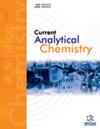喜树碱及其类似物:斯里兰卡用于可持续抗癌化合物生产的高产根皮草种
IF 1.7
4区 化学
Q3 CHEMISTRY, ANALYTICAL
引用次数: 0
摘要
简介喜树碱(CPT)在癌症治疗中起着关键作用,它来源于各种生产喜树碱的植物物种,是合成伊诺替康和托泊替康等珍贵抗癌药物的基本成分。从大自然中获取资源会带来保护问题,因此人们对草本植物 Ophiorrhiza 产生了兴趣,认为这是一种更具可持续性的替代品。斯里兰卡的草本植物缺乏全面的研究,因此有必要对其进行探索,以生产对环境友好的抗癌化合物。研究目的:本研究考察了斯里兰卡不同地区的 Ophiorrhiza mungos、O. pectinata 和 O. rugosa 中的 CPT 和类似物含量。研究方法:研究采用薄层色谱法(TLC)、高效液相色谱法(HPLC-DAD)和液相色谱-质谱法(LC-MS)对 CPT 及其类似物进行定量和确认。结果:在不同植物部位和地区,CPT 及其类似物的含量存在显著差异。来自 Deraniyagala 和 Bibile 地区的 O. mungos 果实和根部的 CPT 含量明显升高。O. rugosa var. Angustifolia 和 O. pectinata 的根中也显示出相当高的 CPT 含量,但明显低于 O. mungos(p < 0.005)。结论该研究验证了符合 ICH 指南的特异性、线性、精确性、准确性和灵敏度分析方法。结果表明,Ophiorrhiza 物种,尤其是 O. mungos 和 O. rugosa var. Angustifolia 有潜力成为 CPT 的可持续来源。优化栽培方法可为抗癌化合物的生产提供生态友好型解决方案,减轻物种威胁并保护生物多样性。本文章由计算机程序翻译,如有差异,请以英文原文为准。
Camptothecin and its Analogs: High-Yielding Ophiorrhiza Species from Sri Lanka for Sustainable Anticancer Compound Production
Introduction: Camptothecin (CPT) is pivotal in cancer treatment, derived from various CPT-producing plant species, and is a fundamental component in synthesizing valuable cancer drugs like Irnotican and Topotecan. Sourcing from nature poses conservation issues, fostering interest in the herbaceous Ophiorrhiza plant as a more sustainable alternative. Ophiorrhiza species in Sri Lanka lack comprehensive study, warranting exploration for echo-friendly anticancer compound production. Objectives: This study examines CPT and analog content in Ophiorrhiza mungos, O. pectinata, and O. rugosa across diverse Sri Lankan regions. Methods: The study employs Thin Layer Chromatography (TLC), High-Performance Liquid Chromatography-DAD (HPLC-DAD), and Liquid Chromatography-Mass Spectrometry (LC-MS) to quantify and confirm CPT and its analogs. Results: Significant variations in the content of CPT and its analogs were observed among plant parts and regions. O. mungos from Deraniyagala and Bibile regions notably exhibited elevated CPT levels in fruits and roots. O. rugosa var. Angustifolia and O. pectinata also exhibited a considerable content of CPT in their roots, though it was significantly lower (p < 0.005) than O. mungos. Conclusion: The study validates analytical methods for specificity, linearity, precision, accuracy, and sensitivity per ICH guidelines. The results indicate that Ophiorrhiza species, especially O. mungos and O. rugosa var. Angustifolia holds the potential to be a sustainable source of CPT. Optimizing cultivation practices offers an eco-friendly solution for anticancer compound production, alleviating species threats and conserving biodiversity.
求助全文
通过发布文献求助,成功后即可免费获取论文全文。
去求助
来源期刊

Current Analytical Chemistry
化学-分析化学
CiteScore
4.10
自引率
0.00%
发文量
90
审稿时长
9 months
期刊介绍:
Current Analytical Chemistry publishes full-length/mini reviews and original research articles on the most recent advances in analytical chemistry. All aspects of the field are represented, including analytical methodology, techniques, and instrumentation in both fundamental and applied research topics of interest to the broad readership of the journal. Current Analytical Chemistry strives to serve as an authoritative source of information in analytical chemistry and in related applications such as biochemical analysis, pharmaceutical research, quantitative biological imaging, novel sensors, and nanotechnology.
 求助内容:
求助内容: 应助结果提醒方式:
应助结果提醒方式:


